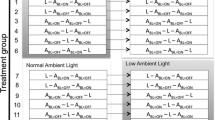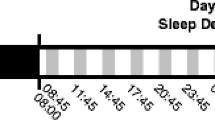Abstract
This field-portable reaction time test and analysis software run on devices using the Palm operating system. It is designed to emulate a test and commercial device widely used in sleep deprivation, shift work, fatigue, and stimulant drug research but provides additional capabilities. Experimental comparisons with the standard commercial device in a 40-hour total sleep deprivation study show it to be comparably sensitive to selected experimental variables. A Pocket PC-compatible version is under developement.
Similar content being viewed by others
References
Cattell, J. M. (1886). The influence of the intensity of the stimulus on the length of the reaction time.Brain,8, 512–515. Reprinted (1947).70, 103–106.
Dinges, D. F., &Powell, J. W. (1985). Microcomputer analyses of performance on a portable, simple visual RT task during sustained operations.Behavior Research Methods, Instruments, & Computers,17, 652–655.
Wells, G. R. (1913). The influence of stimulus duration on reaction time.Psychological Monographs,15(Suppl.), 1–69.
Wilkinson, R. T. (1961). Interaction of lack of sleep with knowledge of results, repeated testing, and individual differences.Journal of Experimental Psychology,26, 263–271.
Wilkinson, R. T., &Houghton, D. (1982). Field test of arousal: A portable reaction timer with data storage.Human Factors,24, 487–493.
Author information
Authors and Affiliations
Corresponding author
Additional information
This material has been reviewed by the Walter Reed Army Institute of Research, and there is no objection to its presentation and/or publication. The opinions or assertions contained herein are the private views of the authors and are not to be construed as official or as reflecting the position of the Department of the Army or the Department of Defense.
Rights and permissions
About this article
Cite this article
Thorne, D.R., Johnson, D.E., Redmond, D.P. et al. The Walter Reed palm-held psychomotor vigilance test. Behavior Research Methods 37, 111–118 (2005). https://doi.org/10.3758/BF03206404
Received:
Accepted:
Published:
Issue Date:
DOI: https://doi.org/10.3758/BF03206404




